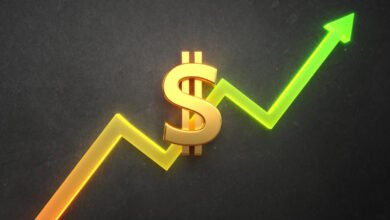Wall Street is pushing back its interest rate cut hopes

Investors were bullish late last year on when, and how quickly, the Federal Reserve would cut interest rates in 2024. New inflation data along with cautious comments from Fed officials have prompted markets to pull back expectations.
Markets are now pricing in three interest rate cuts for 2024, in line with the Fed’s most recent forecast and down from a former consensus of six cuts seen back in December, per Bloomberg data.
Among those pushing back projections for cuts is Goldman Sachs. The firm said Thursday that it now sees four cuts this year instead of its previous projection of five. It expects the first interest rate cut to come in June.
Read more: What the Fed rate decision means for bank accounts, CDs, loans, and credit cards
“Comments this week from Fed officials and the minutes to the January FOMC meeting suggest that the first rate cut is unlikely to come as early as our previous forecast of the May meeting,” Goldman Sachs’ economics team led by chief economist Jan Hatzius wrote on Thursday night.
In Goldman’s new forecast, Hatzius referenced comments from Fed Governor Christopher Waller who said on Thursday that “another couple” of months of inflation data are needed to decide whether January’s hotter-than-expected Consumer Price Index (CPI) report was a “speed bump or a pothole.” Waller’s comments came one day after minutes from the Federal Reserve’s January meeting showed most officials were concerned about the risks of “moving too quickly” when lowering interest rates.
These comments provided two takeaways for Goldman and other economists who recently spoke with Yahoo Finance. For one, the central bank appears confident the economy is on solid footing with few signs of labor market weakness or a downturn in economic growth. This, economists said, could give the Fed confidence it can keep interest rates high without sending the economy into recession.
There is also a growing consensus that despite Fed Chair Jay Powell highlighting six-month progress on inflation at the central bank’s most recent meeting, the Fed will simply want to see more data before lowering rates, as it has said. This, economists said, is why many now expect cuts to come later once more economic data is available.
In sum, the conclusions have created a new market consensus that EY chief economist Gregory Daco believes is warranted given how aggressive market pricing was following the Fed’s December meeting. He noted that since the Fed was late in tightening policy as inflation surged to its highest level in four decades, it will likely be more cautious about cutting too soon.
“That is something that markets have not perceived,” Daco said. “They’ve now come to that view.”
He added: “Markets were anticipating too early and too rapid of a rate cutting cycle, and that just was unlikely to materialize unless the economic landscape shifted materially, unless we saw a notable slowdown in economic activity and an even faster slowdown in inflation.”
But Daco, who still sees the Fed cutting four times this year beginning in May, thinks markets may have now gone too far the other way. He warned against reading too far into January economic data, which he described as “noisy” because the data told too many different stories.
At large, Daco believes the January data showed stronger-than-expected labor market activity, but consumer spending, industrial production, and housing activity were weaker than projected. Typically, a strong labor market would support growth in those other parts of the economy.
“We had a month of January where, if I had the choice, I would essentially take all the data, put it in a bag, and put it aside because I think there was very little signal in the January data,” Daco said.
Even with markets more bearish on cuts there has been a silver lining. Deutsche Bank chief US economist Matthew Luzzetti told Yahoo Finance the financial market’s resilience despite a “tremendous” repricing in rate cut expectations was a welcome sign.
He pointed to stocks holding up — both the Dow Jones and S&P 500 touched fresh intraday highs during Friday’s trading session — while also noting volatility has remained low despite a rise in Treasury yields.
Josh Schafer is a reporter for Yahoo Finance. Follow him on X @_joshschafer.
Click here for the latest stock market news and in-depth analysis, including events that move stocks
Read the latest financial and business news from Yahoo Finance





